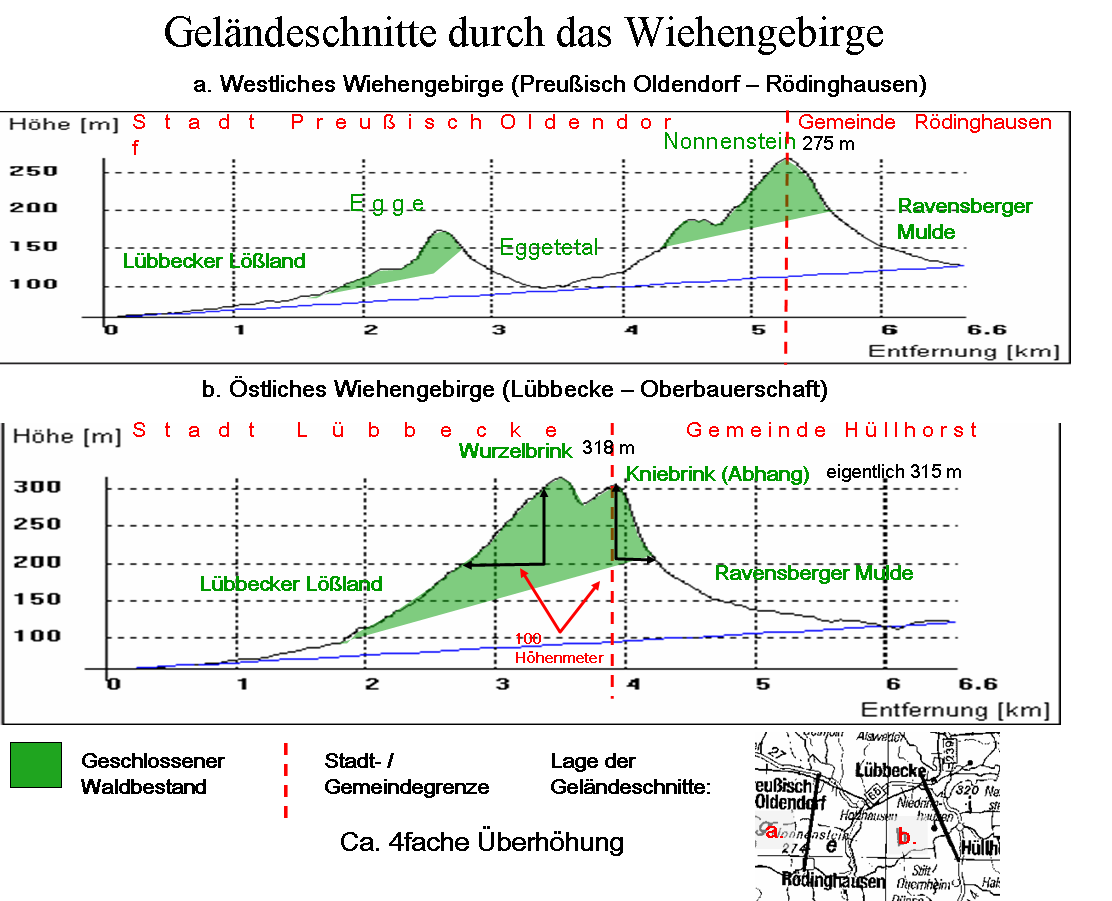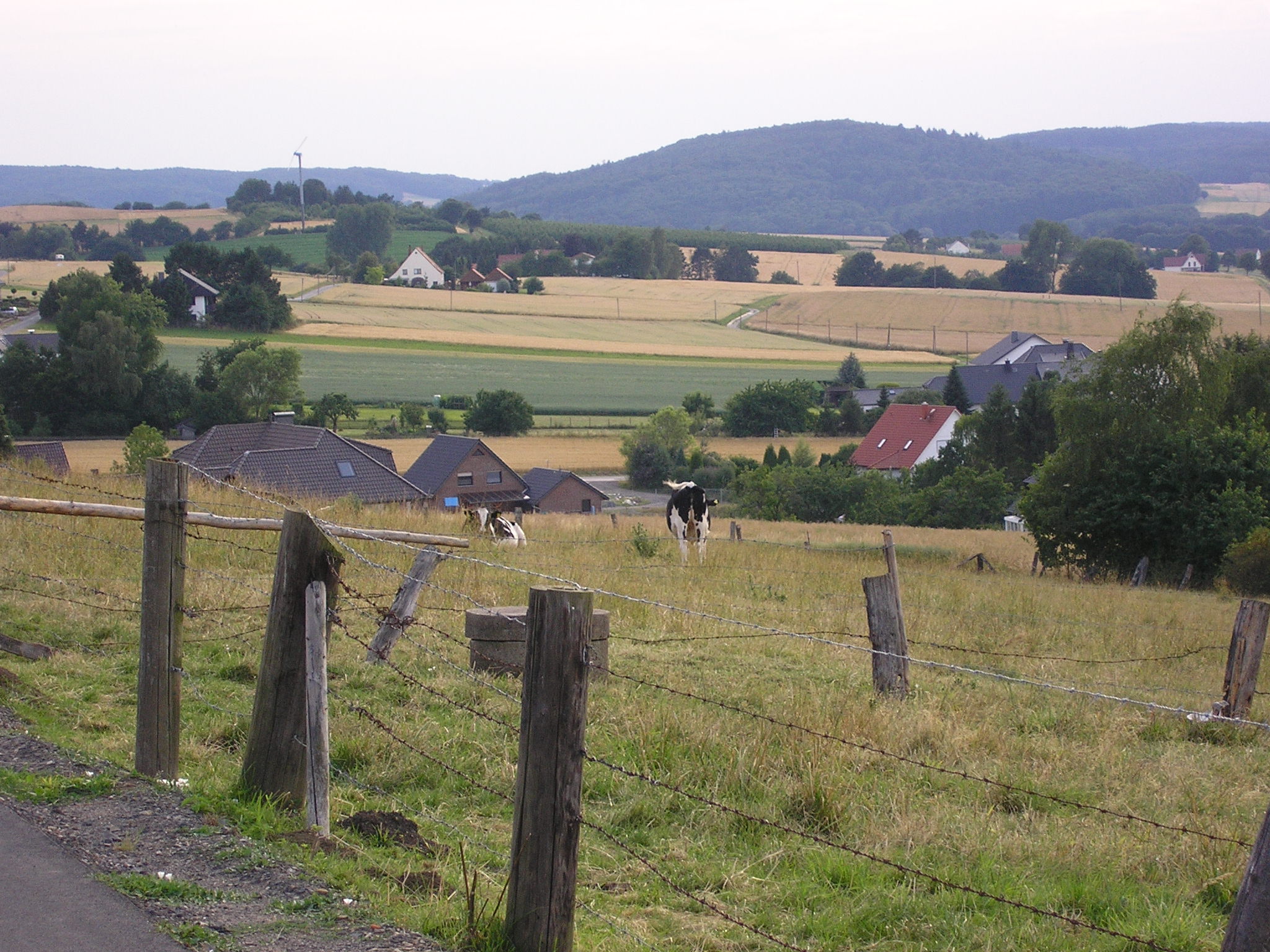Lübbecke Loessland on:
[Wikipedia]
[Google]
[Amazon]



 The Lübbecke Loessland (german: Lübbecker Lößland) is a
The Lübbecke Loessland (german: Lübbecker Lößland) is a
BfN
landscape fact file">BfN">BfN
landscape fact file {{DEFAULTSORT:Lubbecker Lossland Regions of North Rhine-Westphalia Preußisch Oldendorf Lübbecke Minden Bad Essen Wiehen Hills

 The Lübbecke Loessland (german: Lübbecker Lößland) is a
The Lübbecke Loessland (german: Lübbecker Lößland) is a natural region
A natural region (landscape unit) is a basic geographic unit. Usually, it is a region which is distinguished by its common natural features of geography, geology, and climate.
From the ecological point of view, the naturally occurring flora and ...
that is mainly situated in northeastern North Rhine-Westphalia
North Rhine-Westphalia (german: Nordrhein-Westfalen, ; li, Noordrien-Wesfale ; nds, Noordrhien-Westfalen; ksh, Noodrhing-Wäßßfaale), commonly shortened to NRW (), is a state (''Land'') in Western Germany. With more than 18 million inhab ...
but with a small area also lying in the western part of Lower Saxony
Lower Saxony (german: Niedersachsen ; nds, Neddersassen; stq, Läichsaksen) is a German state (') in northwestern Germany. It is the second-largest state by land area, with , and fourth-largest in population (8 million in 2021) among the 16 ...
in Germany. It is a belt of land, covered by loess, about 2 to 5 km wide and around 35 km long, that lies just north of the eastern part of the Wiehen Hills
The Wiehen Hills (german: Wiehengebirge, , also locally, just ''Wiehen'') are a hill range in North Rhine-Westphalia and Lower Saxony in Germany. The hills run from west to east like a long finger away from the main upland area of the Lower Saxon ...
. The total area of the region is about 100 km2. The Lübbecke Loessland is a transitional region between the North German Plain
The North German Plain or Northern Lowland (german: Norddeutsches Tiefland) is one of the major geographical regions of Germany. It is the German part of the North European Plain. The region is bounded by the coasts of the North Sea and the Balt ...
and the Central Uplands
The Central UplandsDickinson (1964), p.18 ff. (german: die MittelgebirgeN.B. In German die ''Mittelgebirge'' (plural) refers to the Central Uplands; das ''Mittelgebirge'' refers to a low mountain range or upland region (''Mittel'' = "medium" and ...
. To the north it borders on the Rahden-Diepenau Geest The Rahden-Diepenau Geest (german: Rahden-Diepenauer Geest) is a natural region in the extreme northeast of North Rhine-Westphalia and in the neighbouring state of Lower Saxony in north Germany. It includes the overwhelmingly gently rolling geest be ...
and, to the east, on the Middle Weser Valley. The town of Lübbecke
Lübbecke (; wep, Lübke) is a town in northeast North Rhine-Westphalia in north Germany. This former county town lies on the northern slopes of the Wiehen Hills (''Wiehengebirge'') and has around 26,000 inhabitants. The town is part of district ...
lies in the centre of the region.
Administrative divisions
Administratively the Lübbecke Loessland includes the greater part of the parish of Bad Essen in the Lower Saxon district ofOsnabrück
Osnabrück (; wep, Ossenbrügge; archaic ''Osnaburg'') is a city in the German state of Lower Saxony. It is situated on the river Hase in a valley penned between the Wiehen Hills and the northern tip of the Teutoburg Forest. With a populat ...
, as well as Preußisch Oldendorf
Preußisch Oldendorf () is a town in the Minden-Lübbecke district, in North Rhine-Westphalia, Germany. In 1905 the town name ''Oldendorf'' was changed officially by putting "Preußisch" in front of it, to make the distinction from other towns with ...
, Lübbecke, and Hille in the North Rhine-Westphalian district of Minden-Lübbecke
Minden-Lübbecke is a ''Kreis'' (district) in the northeastern part of North Rhine-Westphalia, Germany. Neighboring districts are Diepholz, Nienburg, Schaumburg, Lippe, Herford, Osnabrück.
Geography
This is the northernmost district of North ...
, where Minden
Minden () is a middle-sized town in the very north-east of North Rhine-Westphalia, Germany, the greatest town between Bielefeld and Hanover. It is the capital of the district (''Kreis'') of Minden-Lübbecke, which is part of the region of ...
also has a small stake in the region.
Natural features
The Lübbecke Loessland is a ''Börde
A ''börde'' (plural: ''börden'') is a region of highly fertile lowland in North Germany, a "fertile plain". These landscapes often cover great areas and are particularly important for arable farming on account of their rich soils.
These regio ...
'' landscape that falls gently from south to north and is undulating in places. Whilst the southern boundary of the region is clearly defined by the edge of the forests on the Wiehen Hills, its transition to the Rahden-Diepenau Geest is rather more gradual. Only in the east is there a sharp dividing line to the Großes Torfmoor and the Bastau meadows. Its main characteristic is the rich loess soil that gives the region its name, and which was blown out of the sandur on the edge of the glacier during the last ice age
An ice age is a long period of reduction in the temperature of Earth's surface and atmosphere, resulting in the presence or expansion of continental and polar ice sheets and alpine glaciers. Earth's climate alternates between ice ages and gre ...
and deposited on the northern slopes of the Wiehen.
Because of its outstanding loess soils the region is mainly used for arable farming. Grassland only occurs, if at all, on steep sections of the terrain, e.g. along the course of streams and, in places, immediately next to the forest edges on the Wiehen Hills.
There are no large areas of woodland in the Lübbecke Loessland, just occasional small copses, some of which are protected, such as the Finkenburg Nature Reserve.
Apart from the short streams that rise in the Wiehen Hills to the south and cut more or less straight across the Lübbecke Loessland without meandering, there are no significant natural waterbodies. Lakes and ponds only occur where pits or hollows have arisen in the course of quarrying for clay, and which have subsequently filled with groundwater or where men have laid out mill ponds in order to utilise water power.
The Lübbecke Loessland begins in the north at about 50 metres above sea level and climbs towards the south, initially gently, but then increasingly steeply. The southern boundary, say on the forest edges of the Wiehen lies at between 100 and 130 metres above sea level. In other words, for example, in the area of the town of Lübbecke the region is steeper over a distance of about 1.5 kilometres than over the 150 kilometres from the northern edge of the area to the North Sea.
Land usage
The loess region, with its heavy, but fertile soils - soil qualities of 75 or more are not uncommon - has been intensively farmed since ancient times. That partly explains the dense population in this area. In places the built-up area is so dominant that there is hardly any room left for agriculture; and sometimes villages follows one after another in a row. Outside the main areas of settlement, though, arable farming is the predominant form of land use, with cereal crops (wheat
Wheat is a grass widely cultivated for its seed, a cereal grain that is a worldwide staple food. The many species of wheat together make up the genus ''Triticum'' ; the most widely grown is common wheat (''T. aestivum''). The archaeolog ...
, barley
Barley (''Hordeum vulgare''), a member of the grass family, is a major cereal grain grown in temperate climates globally. It was one of the first cultivated grains, particularly in Eurasia as early as 10,000 years ago. Globally 70% of barley ...
and mangelwurzel
Mangelwurzel or mangold wurzel (from German ''Mangel/Mangold'', "chard" and ''Wurzel'', "root"), also called mangold,Wright, Clifford A. (2001) ''Mediterranean Vegetables: a cook's ABC of vegetables and their preparation in Spain, France, Italy, ...
s) being especially common, sometimes mixed with large areas of special crops (apples, cherries, strawberries and bush fruits. Sugar beet
A sugar beet is a plant whose root contains a high concentration of sucrose and which is grown commercially for sugar production. In plant breeding, it is known as the Altissima cultivar group of the common beet ('' Beta vulgaris''). Together ...
cannot be economically produced here, although the soils would favour its cultivation, because there are no sugar factories nearby.
Where the loess has the quality of clay, clay pits and consequently brick factories were able to be established, however most of them no longer exist.
The Lübbecke Loessland belongs to the more charming loess landscapes in Germany because, unlike the rather monotonous and bare Börde countryside around Magdeburg or Cologne, here the forested Wiehen Hills in the south or the bog-rich geest
Geest is a type of landform, slightly raised above the surrounding countryside, that occurs on the plains of Northern Germany, the Northern Netherlands and Denmark. It is a landscape of sandy and gravelly soils formed as a glacial outwash plai ...
of the Rahden-Diepenau Geest The Rahden-Diepenau Geest (german: Rahden-Diepenauer Geest) is a natural region in the extreme northeast of North Rhine-Westphalia and in the neighbouring state of Lower Saxony in north Germany. It includes the overwhelmingly gently rolling geest be ...
in the norther is never very far away. The landscape is very varied so that it is little wonder that several of the few state-recognised climatic spas in North Rhine-Westphalia, such as Bad Holzhausen
Bad or BAD may refer to:
Common meanings
* Evil, the opposite of moral good
* Erroneous, inaccurate or incorrect
*Unhealthy, or counter to well-being
*Antagonist, the threat or obstacle of moral good
Acronyms
* BAD-2, a Soviet armored trolley ...
or Börninghausen, occur here.
The aforementioned relatively steep gradient in the region favoured the use of water power from the earliest times. This was restricted, however, by the low discharge of the streams, because they generally had only a small catchment area. Nevertheless, there were no less than five water mills in Lübbecke in 1750 along the course of the Ronceva, and the utilisation of water power was a crucial factor in enabling towns and villages to be established and thrive here rather than elsewhere. For example, the foundation of the town of Lübbecke was closely linked to the availability of a stream that could supply water power. (The name "Lübbecke" is derived from ''Hlidbeki'', i.e. "small stream").
Today, however, water power no longer plays a significant role.
Transport
As a strip of land between the Wiehen Hills in the south and the bogs to the north that was populated early on and thus cleared, the Lübbecke Loessland encouraged the early establishment of an east-west route. What is certain today is that legions of the Roman general, Varus, came from the east to the northern foot of the Wiehen Hills, i.e. they moved through the Lübbecker Loessland before being destroyed atVenne Venne is a surname. Notable people with the surname include:
* Carl Venne (1946–2009), Native American leader
* James Miles Venne (died 2007), Canadian aboriginal leader
* Joseph Venne (1858–1925), Canadian architect
* Lottie Venne (1852–1928 ...
by the Germanic general, Arminius. Due to the typical geography of the area the Romans were bottled up between the bogs and the hills, which had a decisive influence on the outcome of the battle.
Later the medieval Minden-Osnabrück military road (''Heerstraße Minden-Osnabrück'') ran through the region. This corresponds to the western section of today's federal road, the B65, and runs mostly in the more northerly, level part of the Lübbecke Loessland linking the Osnabrück and Minden regions.
Sources
* Emil Meynen (ed.): ''Handbuch der naturräumlichen Gliederung Deutschlands.'' Selbstverlag der Bundesanstalt für Landeskunde, Remagen 1959-1962 (Part 2, contains delivery nos. 6-9).External links
BfN
landscape fact file">BfN">BfN
landscape fact file {{DEFAULTSORT:Lubbecker Lossland Regions of North Rhine-Westphalia Preußisch Oldendorf Lübbecke Minden Bad Essen Wiehen Hills